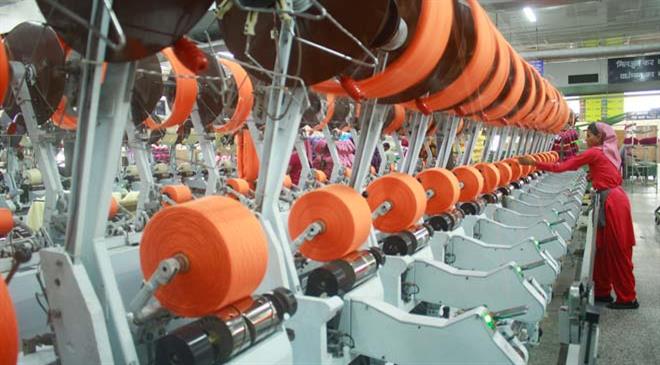Recovery begins when you decide to move forward
Founded with 6,000 spindles in 1965, Vardhman Group today is the largest vertically integrated textile manufacturer in India, with a turnover of more than $1.1 billion a year. Headquartered in Ludhiana in the Malwa region of Punjab, an area commonly renowned as the 'Manchester of India', it has had its own share of battles as Covid struck one and all. In an interview with Paulami Chatterjee, Suchita Oswal Jain, VC & JMD of Vardhman Textiles, speaks about the bigger challenge the Indian textile industry faced when the pandemic raised its ugly head in March, and how in spite of that it has worked to stay as stable as it could.
A whole lot of brands have come under the scanner the way they handled orders that have already been produced. Manufacturing nations are expected to scrutinise contracts more carefully than earlier especially the Force majeure clauses. What is your take on it?
Business is based on faith, demand, and supply rather than legal obligations. At Vardhman, we have always emphasised meeting commitments and building lasting relationships. Having strong professional relationship helps in managing such difficult times better.
The pandemic affected each and every one of us. The buyers were also in trouble, owing to the lockdown, as the stores were shut, and business incurred losses. The need was to understand each other and have a common ground. After all, manufacturers and the brands are mutually dependent and have to co-exist.
How has the worldwide lockdown impacted the textile & apparel industry? What are the immediate concerns and key takeaways?
Since Covid has remained with us (in India) since March 2020 and still persists, it is not possible to say it had a completely negative or positive impact. There were phases of pandemic and also its impact. For instance, in the initial days i.e during the beginning of lockdown, everything came to a standstill, the factories were shut, the status of orders was not clear and economic growth stopped for a while. Closure of all the major stores worldwide led to loss of sale in retail stores which in turn affected everyone in the supply chain including manufacturers and suppliers.
Then with lockdown being lifted, life as also economy started limping back. We were lucky that many of our employees reside within the factory premises in our residential colonies, so we could re-initiate the manufacturing within a month of lockdown. Thereafter, the engine of growth started churning again. At present there are sections of industry which are doing well. Production wise the situation has improved but it will take some time for improvement in terms of consumption.
Businesses do face challenges and Covid is also one such challenge the industry is adjusting to. With physical meetings at bay, this has revolutionised the pace of adapting to digitalisation in textile manufacturing industry. So, the major takeaway it offers is - grow your roots strong enough to stand tall in the winds of challenges and adapt with agility; speed is of essence. If there is a problem, there has to be a solution. Keep your eyes glued to the bright side of the tunnel and you will pass through the darkness without much bother.
Any comparison on how differently the Indian textile industry got affected compared to the world?
The impact on small, medium and large-scale industry is different within India, so if we are comparing Indian textile industry with rest of the world; there certainly will be differences. Since larger industries invest in resources to plan better and manage crisis effectively, they worked their way more successfully in staying stable during the challenging times. There was a dip in demand and market, thus did the industry, but we Indians have an appreciable quality - we save for the rainy day.
However, if we see technically, Indian textiles is largely dependent on exports and it won't be wrong to say that spring/summer (retail) is the major textile product for Indian manufacturers. The period of March to September is the principal retail season for Indian export products. The pandemic started in the month of March and there was a restriction on export for a substantial period; things did improve gradually. As compared to countries that produce products primarily for winter season, the challenge perhaps was bigger for the Indian textile industry but we are competitive and continuously improving. It won't be an exaggeration to say, in some sections, we have already come at par with our set targets.
Are there any positive outcomes of the current crisis if at all for the textile industry?
We believe that every crisis is an opportunity to learn and this pandemic is no different. For instance, practices like work from home (WFH), web meetings, webinars, digital collections and virtual factory tours have increased substantially. We have digitalised the system at a much faster pace than we would have done during the 'normal-normal'.

There is a lot of talk about rewiring businesses to arrive at the new normal. Is there any thought process towards this at the company level or collectively as an industry?
The industry keeps rebuilding itself on a regular basis. Be it in terms of technology, processes or practices, change is the only constant. The new normal might have triggered a faster change but stagnancy is never acceptable in businesses. We are constantly adapting, innovating and moving forward, just as always.
How critical would be the reduction of trained manpower on fronts like manufacturing, warehousing, supply chain etc for the businesses?
Skilled manpower is the backbone of the manufacturing industry. As much as having a job is important for the workers, industry can't function without the required workforce. We, at Vardhman, always emphasise on a long-term approach and believe that it is the employees who are the harbinger of success. We continuously invest on up-skilling our employees through means of trainings - both technical and soft.
Additionally, we all are interconnected economically. Even B2B businesses are dependent on consumer's consumption. If we see the bigger picture, the employees are in a way the customers, and by reducing their income, the industry will reduce the chances of a speedy recovery from the ongoing economic dip.

How can textile and apparel companies better manage their workforce and supply chain amid current situations?
For managing workforce, there's primarily one key - mutual growth and inclusive management. Employees aligned with organisational values are the most important resource. In current times, when technological advancements are quickly transforming the way we operate, organisations should empower their employees with a stronger and relevant skill set. Be it the Covid scenario or any other challenge, it is crucial to build the right team.
If we talk particularly about current times, clearly virtual or digital has replaced the physical. Webinars and communication without a meeting have become the norm. It is mandatory to absorb this change and prepare your employees for the same. Supply chain too is managed by people, and hence to manage it efficiently, managing the human resource is important.
Which countries have fared well in offering stimulus to the textile industry? Where is India lacking?
Everyone is trying their best to manage the crisis, depending on the resources available. We can't say that we are behind anyone in giving a tough fight to this crisis. Nobody had faced a challenge like this before. When managing an uncertainty, you are anticipating and trying various approaches without knowing the actual outcome. We are all in this together.
Can India reduce its dependency on China in terms of sourcing of raw materials? What are the pros and cons?
Export and import is as old as business itself. From centuries people sell and purchase imported goods. That's not dependency, that's business. Having said that, self-reliance is a major strength. As the largest vertically integrated textile manufacturer, it is a primary strength of Vardhman that from sourcing to spinning of yarn, to weaving and processing of fabric, everything is in-house, giving us complete control over the entire chain and delivering excellence. So, I would preach self-reliance but at the same time, would emphasise that we do source our technology, IT solutions, etc. It is not possible to function just by yourself; a collaborative approach is a requisite.
If we talk particularly about reducing our dependency on one country, again, we will need proper planning and preparation. Such changes don't happen overnight.
How have consumer preferences changed post lockdown?
Before the pandemic hit the world, textile industry was already shifting to becoming greener and reducing the carbon footprint. More organic and sustainable solutions, functional fabrics etc were and still are at the centre of endeavours.
With the pandemic and subsequent lockdown, a new term that grabbed the attention was 'defensive textile', with reference to fabrics with anti-microbial properties. Masks and PPEs were manufactured in massive numbers owing to the soaring demand. Another shift that the textile industry witnessed was the demand for comfortable workwear for work from home setting.
Considering the purchase pattern, goods have started moving and people are once again purchasing for more than the bare essentials, with an inclination towards online shopping.
Based on consumer preferences, how are businesses going to get altered? What role will technology have in it?
The first change in terms of technology that we can think of, in light of the pandemic, is meetings being conducted virtually. Lack of physical proximity has altered life in ways we cannot count. From communicating and presenting the products to the customers, to connecting with the technology partners, digital mode is everywhere.
Alongside, technology also has to serve its primary purpose i.e, innovation and development. The demand for personal protective products is at an all time high. In addition to medical usage, there is a preference for apparels with a protective layer. Textile manufacturers are thinking of products/solutions that combine fashion, comfort, and protection, all in one.

Fashion executives/brands are being urged to place sustainability at the core of their business models post Covid-19. Your comments on this.
Sustainability is the way to go. Vardhman has always been focused on sustainable operations right from its inception. We are already using sustainable raw materials like organic cotton, recycled poly fibre, BCI cotton, Tencel etc. We continuously seek and adapt greener processes and utilise the most advanced technology to keep the operations at par with our sustainability goals.
Alongside, we have been working to reduce consumption of resources like water, steam, and energy, as also the use of chemicals to lower our carbon footprint. Our endeavours in this domain have also been appreciated by Frost & Sullivan & TERI this year. Vardhman Fabrics, our unit in Budhni, Madhya Pradesh participated in Sustainability Awards 4.0 and has won two awards. One being the Challenger's Award in Large Business Sector and other being Jury Special Mention Award for water saving initiatives.
By when are you expecting the revival process to commence and what is your recovery model?
Recovery begins when you decide to move forward. If you ask me, recovery has already started. Life doesn't wait and so can't we. Holding on to your passion and giving it your best try to achieve your goals is what entrepreneurs have to do every day -- victory is winning despite the challenges.
What is the road ahead for the textile & apparel industry in India?
Nobody can predict the course of future. When Covid first came into discussion, did we have any idea of something so massive to happen? I read somewhere that on some days winning is achieving something big while on some days, even staying alive is an achievement. We are in the middle of a storm and working to stay as stable as we can. I personally believe that one shouldn't stop unless the desired results are achieved and sticking by that principle, I am hopeful of a positive change soon.






